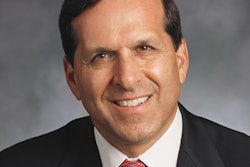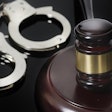
I recently had the opportunity to present a seminar to a very high-level study club. All of the doctors in the room produced a minimum of $1.5 million annually, and most had been repeating this process year after year.
I have had the opportunity to give these doctors insights into not only what made their practices great but also what would allow them to grow further. I have showed them how to create a strategic growth plan. All of the strategies, systems, and tactics that I teach come from extensive data-driven and observational research.
Since 1985, we've observed more than 30,000 practices to determine the best methodologies to help practices go from point A to point B. One of the key things I have learned over the last 37 years is that practices typically move through four phases of development. Following this trajectory allows them to become and remain great practices.
The four phases are as follows:
- The entrepreneur
- Rapid growth
- The CEO
- The strategist
Phase 1: The entrepreneur
 Dr. Roger P. Levin.
Dr. Roger P. Levin.Phase one of the path from entrepreneur to CEO occurs in the early stages of any new practice or recently purchased practice. Typically, the dentist is young, full of energy, and willing to do whatever it takes to be successful. There is a high level of excitement and motivation, but there is also a desire to earn a larger income, to pay off debt, and to take care of lifestyle factors, such as family or other expenses.
Phase one is characterized by chaos, stress, a high administrative workload for the doctor, and a growing but not fully trained team. For a mature dental practice, this would seem tumultuous, but the truth is that it isn't as horrible as you might think. This is because doctors are willing to put in the time and effort, even after hours and on the weekends, to move the practice toward a higher level of performance.
Like any entrepreneurial business, if this is a new practice, it is simply a race between having enough revenue to pay bills with something left over to be called income. Very few new dental practices go bankrupt.
In phase one, the practice is typically growing. Systems are not yet in place, but new policies and principles are continuously established in response to different scenarios, such as overdue collections, no-show patients, and managing dental insurance.
If the practice were reviewed for efficiency and performance, it would be viewed as subpar, but once again, it does not matter. The practice is growing, the doctor is motivated, and the team does what it needs to do to get through the day. Phase one is often a time that doctors fondly reflect on as a great phase in their career.
Phase 2: Rapid growth
Like any entrepreneurial business, there should be a stage of rapid growth in which revenue begins to significantly exceed expenses. This is when entrepreneurs realize they are going to make it.
Keep in mind that dental practices aren't exactly like most entrepreneurial businesses. There are a limited number of licenses to practice dentistry, which maintains a specific supply of dentists for the overall population. Although that supply is growing, most practices still have a good supply and demand ratio of dentists to the population, which allows practices to achieve a level of growth.
Phase two is characterized by growth -- and growth means that certain things must happen. More patients need to be seen, which means the practice now needs a better scheduling system versus simply filling in holes, as is often the case in phase one. It also means that new staff members need to be hired to cover positions, because the doctor can no longer do certain things during scheduled patient hours.
In some cases, the doctor's after-hours and weekend hours expand so he or she can manage the administrative side of the practice. This is not an unusual scenario in phase two, as practices learn how to handle patient flow but don't necessarily implement comprehensive, proven systems that allow the team to run the office each day. In phase two, staff members still regularly ask questions of the doctor throughout the day, customer service is erratic as the practice is growing, and some level of fatigue can set in and even lead to burnout. Burnout often happens in phase two as the practice outgrows its human capability and business management systems.
The good news is that phase two can be very good financially for the practice. Income and profit are being produced, doctors can begin to fund their lifestyle, pay off debt, accumulate savings for eventual retirement, and even buy some of those luxury goods that seemed so far away just a few years earlier.
The financial factors can be positive, but the stress and strain on the practice, doctor, and team can be high. What most doctors don't realize is that the same conditions that allow for growth in phase two then become the Achilles' heel or barricade to any further growth past that point. The reason is that the practice hits a point of being overwhelmed and simply isn't set up to exceed that hurdle.
One can think of this situation in terms of a weightlifting analogy. If you start lifting weights, your muscles grow. But if you never increase the weight or vary the routine, the body plateaus and reaches a point where muscle mass will not increase.
The same is true for a dental practice. Phase two is a great place to be -- it is a great place to spend some time -- but you do not want to remain there. Unfortunately, most doctors typically live in late phase two for their entire career.
Next month's column
The next two phases of a practice's growth, which we will cover in next month's column, are the CEO phase and the strategist phase. Doctors who achieve these levels typically enjoy highly successful and satisfying careers.
Dr. Roger P. Levin is CEO of Levin Group, a leading practice management and marketing consulting firm. To contact him or to join the 40,000 dental professionals who receive his Practice Production Tip of the Day, visit LevinGroup.com or email [email protected].
The comments and observations expressed herein do not necessarily reflect the opinions of DrBicuspid.com, nor should they be construed as an endorsement or admonishment of any particular idea, vendor, or organization.


















